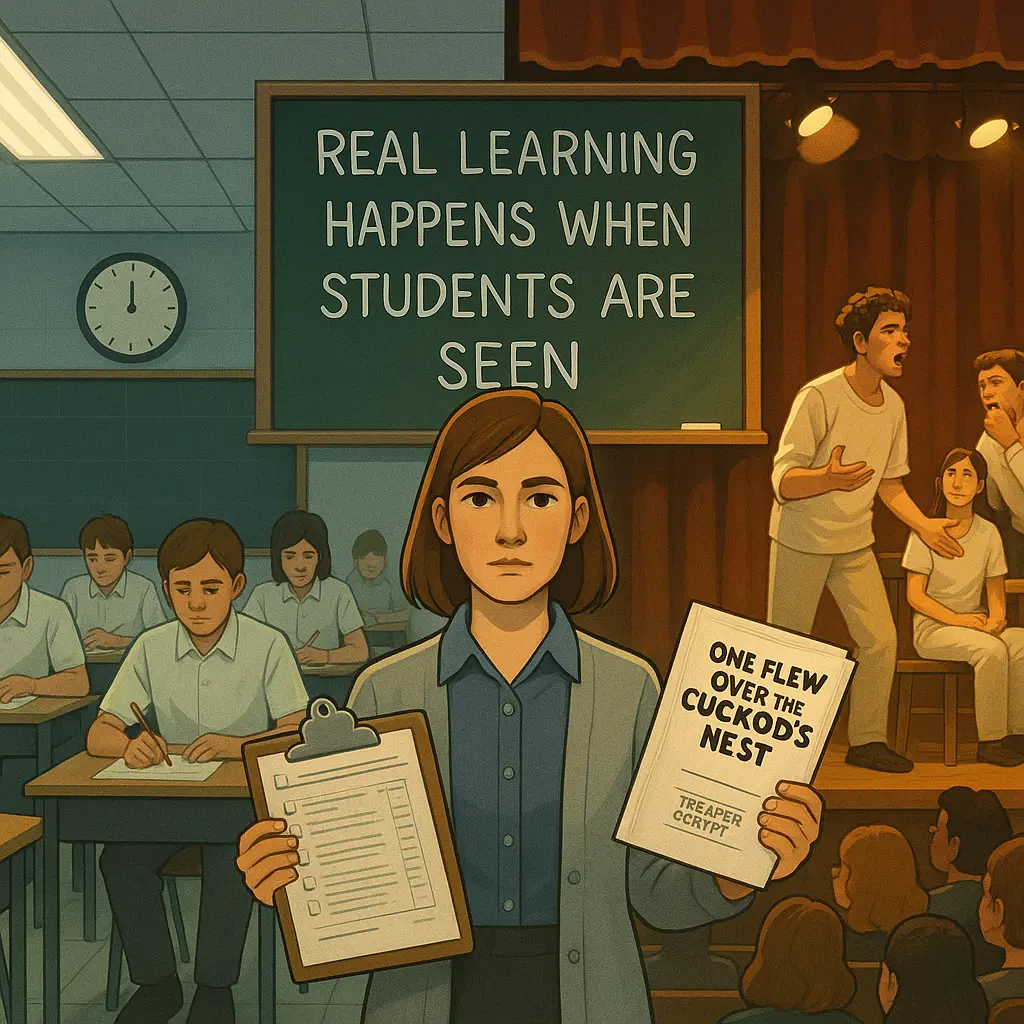
An excerpt from The Politics of Education K-12, available on Amazon.
Jim McMahon, a rookie English teacher in upstate New York, took a risk. Instead of relying on weekly spelling tests and bubble sheet drills, he had his “school group” students those with weaker academic skills and frequent discipline issues perform a play. Faculty doubted him. After all, these students still had to pass the Basic Competency Test (BCT), the standardized test of the 1970s.
When the students performed a scene from One Flew Over the Cuckoo’s Nest at a school assembly, they stunned their peers into silence, then applause. That evening, they performed the full play for their parents, many of whom only came to school when their child was in trouble. It was a success, and the students’ pride was evident for weeks.
This was an authentic assessment a real test of reading, speaking, listening, teamwork, and self-confidence. It was messy, subjective, and hard to measure with rubrics, but it was real learning.
Authentic vs. Bubble Sheet Assessments
Bubble sheet tests, like the BCT, offer reliable, repeatable scores. They ensure consistent standards and help identify gaps in student learning, which is vital for addressing educational inequity.
However, bubble tests often fail to measure motivation, confidence, teamwork, and real-world application. Authentic assessments, like Jim McMahon’s play, capture these essential but intangible aspects of learning.
The best education systems balance standardized testing with authentic learning experiences. Students deserve opportunities to prove themselves beyond fill-in-the-bubble tests.
Why It Matters
Educators should seek opportunities for authentic assessments while using standardized tests to guide instructional improvements. Students need more than test-taking skills; they need confidence, creativity, and communication abilities that only real-world projects can build.
Learn More:
For more on how assessments impact students, read What is Authentic Assessment?.